If you or a loved one are struggling with alcohol use disorder or substance use disorder it can feel like there aren’t any resources available to help you. Rehab can often seem like a scary option, or like it’s something that other people need, but that you and your loved one can do without.
The truth is that inpatient rehab not only isn’t frightening, it can be one of the safest and most supportive ways to overcome a substance use disorder. You aren’t alone, and you should have to be alone in your fight against addiction.
Here’s what you need to know about inpatient rehab if you’re considering it for yourself or one of your loved ones.
Table of Contents
ToggleWhat Is Inpatient Rehab?
Inpatient treatment for addiction, or inpatient rehab, in the simplest terms, describes a treatment center where people come to detox safely, and learn new skills and coping mechanisms that help them grow and overcome their addiction in the long term.
One of the biggest advantages of inpatient rehab is that you get extra support, both medically and emotionally, throughout the process. Inpatient rehab centers are also designed to take care of other concerns, like making sure patients are eating and that there is healthy food available so that patients can focus on themselves and their recovery.
Inpatient rehab programs offer more intensive treatment and support and are generally a better option for people dealing with severe addictions, or who have relapsed in the past.
What Happens In Inpatient Rehab?
There are a lot of different steps to inpatient treatment, starting with the initial detox and then moving on to rebuilding healthy coping mechanisms and unpacking and starting to understand the reasons for addiction in the first place.
Patients are usually carefully scheduled throughout the day in rehab programs. You’ll have scheduled meals, group and individual sessions with psychologists, psychiatrists, and supporting staff, along with activities and time for reflection on what you’ve learned and the new skills you’re building in the program.
Every inpatient treatment program is a little different, but they’re all designed to offer a sense of security and consistency so that patients can focus on recovery and growth.
Most programs involve individual or group counseling and use a step-down approach, which means sessions become less intensive and frequent as you grow during treatment. These programs help patients overcome their drug or alcohol dependence and then maintain their recovery over the long term.
Are There Different Inpatient Programs?
Yes, there are a lot of different options for inpatient rehab programs. Most programs are based on the National Institute on Drug Abuse, Principles of drug addiction treatment: A research-based guide (third edition).
However, the exact combination of methods used, setting, schedule, and other details of the treatment can vary widely from program to program.
Additionally, treatment of alcohol use disorder and substance use disorder may have separate programs, a combined program, or even entire rehab centers dedicated to overcoming a specific form of addiction.
What Is The Purpose Of Inpatient Rehab?
There are a few purposes of inpatient rehab as opposed to partial outpatient and fully outpatient programs.
For one thing, inpatient rehab helps reduce the stress patients are dealing with while they are trying to recover. Since your basic needs are all taken care of in rehab, you have that much less to worry about while you’re there.
By limiting potential stressors, including reducing contact with the outside world and social situations that may be triggers for addictive behavior, patients are given a better chance to recover and rebuild healthy behavior patterns.
Another big benefit of inpatient rehab is that you have access to medically assisted detox. That can mean extra hydration support, watching for potentially dangerous medical situations that arise during detox, or even helping patients manage the worst of their detox symptoms for a gentler process.
A Typical Day During Inpatient Rehab
Days in rehab are closely structured, in part because patterns and routines can make it easier to focus on recovery. That means that you can expect largely the same routines once you’re out of detox, and sometimes even during detox.
Every program is different, but here’s a quick summary of what you can expect.
Morning
Most rehab centers wake patients at the same time every day. You’ll eat breakfast, and then have your first session or two of the day with group or individual counseling. Before lunch, you’ll likely have time for personal reflection or optional activity.
If you have any medications they’ll be issued during the morning. Medications that need to be taken later in the day, or several times a day, will be given individually as needed. You’ll never be given more than one dose at a time.
Afternoon
Afternoons are usually a combination of optional and mandatory activities, more individual and group counseling sessions, or meeting with your care team to check-in and determine your next treatment goals.
Opportunities for exercise or time spent outside are usually scheduled in the afternoon.
Evening
Evenings typically involved dinner and perhaps an additional group session. Often there’s a wrap-up session where you can go over the day, anything you’ve been thinking or feeling, and important takeaways from treatment.
There’s usually some free time, but most rehab centers also have a ‘lights out’ time when patients are expected to go to sleep or try to sleep.
How To Know If Rehab Is Needed
It can be difficult to know when rehab is necessary, and when it’s a good idea to consider an inpatient rehab facility.
Generally, if you or your loved one feel unable to stay sober, whether you’re using alcohol or drugs, that’s a good first sign that rehab might be a good idea.
You should also consider whether you have the support you need to detox outside of a rehab facility. If you don’t have friends or family that are willing and able to support you through that process, inpatient treatment may be safer and more effective.
Past relapses, a history of trauma or abuse, and any other risk factors for substance use disorders may all indicate that enrolling in a rehab program will be more helpful for you.
The longer you have struggled with substance use disorders, the more likely it is that you may need the additional support of a rehab facility.
Where Can More Information And Support Be Found?
There are a lot of places you can look for more information and support. For instance, here at Agape, we have an outline of what kinds of disorders we treat, including drugs and alcohol. We also have more information about addiction in general and how addiction functions, along with the signs and symptoms that someone you love may be addicted.
If you’re considering a different rehab center, there may be more information about their programs and treatment criteria on their site.
Or, you can continue looking for information on our site to learn more about the program, addiction, and how inpatient treatment programs can help.
First Steps To Inpatient Rehab
The first step to getting into a rehab program is recognizing that there is a problem and choosing to actively seek help.
Typically the next step is speaking with your doctor about your concerns and asking if there are any rehab facilities or programs they would recommend. Groups like Alcoholics Anonymous, Narcotics Anonymous, or therapists and even religious leaders may have information about local rehab options.
Next, you’ll want to research your options and decide which facility is right for you. Insurance, program specialties, and even the doctors involved in the program can all be important things to consider when you’re deciding between programs.
Once you’ve decided on a program you should reach out to the facility and see if you meet their requirements for treatment, and whether they have any space available.
Assuming you’re a candidate for treatment and the treatment center has space, you should speak with friends, family, and your employer about your treatment plans. In many cases, you’ll be able to keep your job and arrange for pet or family care in your social circle, but you may need to make additional plans if those things are a bigger challenge for you.
Ultimately your pre-treatment goal should be to eliminate as many sources of stress as possible before you enter treatment. That may mean arranging childcare, getting a leave of absence from work, or making sure your pets are taken care of while you’re gone.
If doing all of this sounds daunting, remember that you don’t have to do it alone. Friends and family can help you make some of your plans, and you may have access to a caseworker that can help you plan and navigate the system depending on your treatment needs and the program you’re considering.
While you’re planning, remember that patients who remain in treatment for longer periods are more likely to achieve maximum benefits. Treatment lasting 3 months or longer is often a predictor of a successful long-term outcome. (Gerstein and Harwood, 1990).

Stephanie Robilio is an accomplished Clinical Director at Agape Behavioral Healthcare. With a Master of Social Work degree, LCSW license, and extensive training in Rapid Resolution Therapy under her belt, she brings a wealth of expertise to her role. Her unique combination of education and experience allows her to provide exceptional care to clients and lead her team with confidence. Stephanie’s joy comes from witnessing the moments when her patients creatively connect the dots and bravely move toward reclaiming their power. Her purpose is to help individuals understand their past so they can create a future full of hope, growth, and success. Stephanie attributes a large portion of her success to the supportive culture and strong sense of community fostered by the Agape team.







